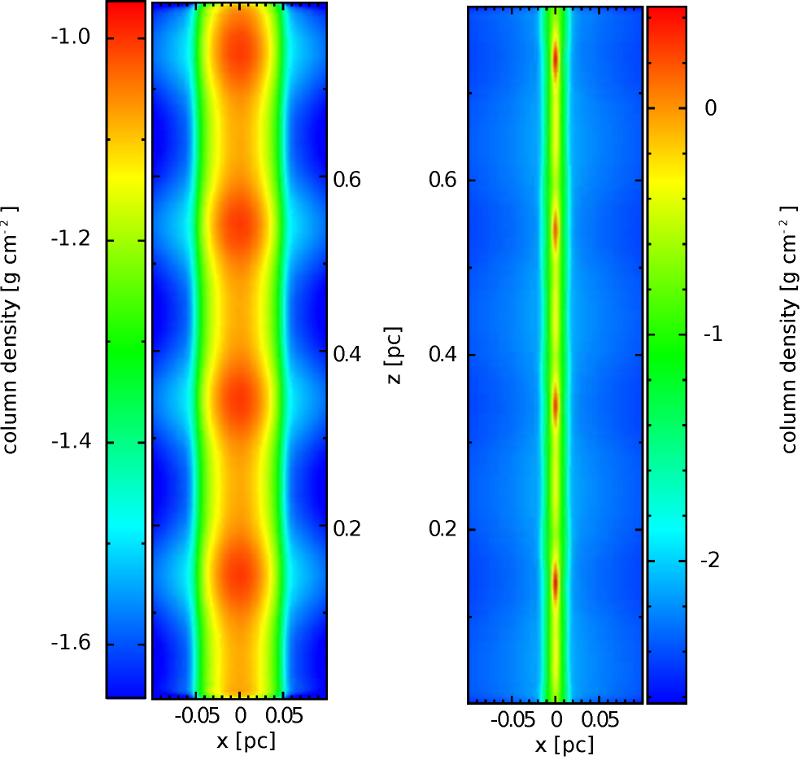| EPoS Contribution |
|
Perturbation growth in accreting filaments
Seamus Clarke Cardiff, Cardiff, GB | |
| We use smoothed particle hydrodynamic simulations to investigate the growth of perturbations in infinitely long, initially sub-critical but accreting filaments. The growth of these perturbations leads to filament fragmentation and the formation of cores. Most previous work on this subject has been confined to the growth and fragmentation of equilibrium filaments and has found that there exists a preferential fragmentation length scale which is roughly 4 times the filament's diameter. Our results show a more complicated dispersion relation with a series of peaks linking perturbation wavelength and growth rate. These are due to gravo-acoustic oscillations along the longitudinal axis during the sub-critical phase of growth, when the filament is far from equilibrium. The positions of the peaks in growth rate have a strong dependence on both the mass accretion rate onto the filament and the temperature of the gas. When seeded with a multi-wavelength density power spectrum there exists a clear preferred core separation equal to the largest peak in the dispersion relation. Our results allow observers to estimate a minimum age for a filament which is breaking up into regularly spaced fragments, as well as a maximum accretion rate. We apply the model to recent observations of fragmenting sub-filaments in Taurus and find accretion rates consistent with those estimated by observers. | |
 | |
| Caption: The column density projected onto the x-z plane at two different times. On the left, at t = 0.15 Myr, the filament has formed on the z axis, it is sub-critical and confined by the ram pressure of the accreting gas. On the right, at t = 0.55Myr, the filament has become supercritical and is contracting radially, the seeded perturbations become sites of local collapse. | |
| Collaborators: A.P. Whitworth, Cardiff U, GB D.A. Hubber, LMU Munich, DE |
Suggested Session:
Filaments |

